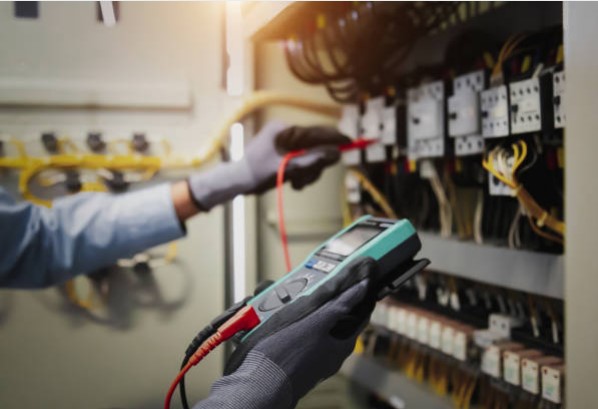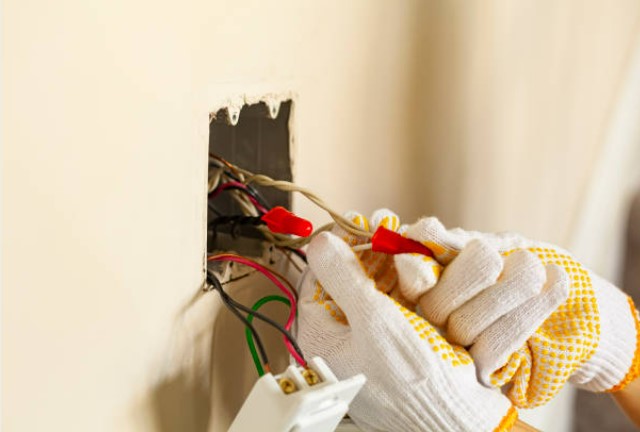The Greater Vancouver Area’s demand for qualified electricians is on the rise. Whether it’s residential electrical services, commercial electrical services, or industrial electrical work, the need for skilled professionals who can explore electrical systems becomes important.
This blog will discuss the essential tools licensed electricians need for successful electrical projects.
Importance of Being a Licensed Electrician
In a recent report by Albert Delitala for Global News, the International Brotherhood of Electrical Workers (IBEW) in Ontario raises concerns about the prevalence of unregistered electrical workers, labelling it a “huge problem.” The tragic death of an 18-year-old unregistered worker further emphasizes the risks associated with unqualified personnel in the electrical sector.
This unfortunate incident serves as an important reminder of the dangers of allowing unqualified individuals to work in the electrical sector.
Why is working with a licensed professional electrician electrician important?
- Safety Assurance: Professional electrical contractors undergo rigorous training to ensure they possess the skills to work safely and prevent accidents.
- Code Compliance: A licensed electrical contractor knows local and national electrical codes to guarantee that all work meets the required standards.
- Quality Workmanship: Professional electricians have the expertise to deliver high-quality work.
- Legal Requirements: Regulatory bodies mandate licensing to adhere to the legal requirements and industry standards.
Top Essential Electrician Tools
Electricians in Vancouver need the right tools to do their jobs safely and efficiently. Building a toolkit might be challenging and expensive, but it’s smart to start with the tools you use most and expand over time.
Here’s a comprehensive list of essential tools every professional electrician should have:
- Wire Strippers
These tools help remove the plastic coating from wires without causing any damage. Some can also strip sheath and insulation from twin and earth cables. These tools help remove wire insulation and come in various types, from manual ones with specific holes for different wire gauges to automatic ones that adjust themselves.
- Wire Cutters
Useful for cutting electrical wires, especially when your wire stripper doesn’t have a built-in cutter. Insulated handles protect against electrical shock.
- Electrical Wire Pliers
This handy tool removes wires from junction boxes and returns them without harming the wire.
- Insulated Lineman’s Pliers
Perfect for gripping, twisting, cutting, and bending electrical wiring. The design allows for high force and increased accuracy.
- Insulated Needle-Nose Pliers
Ideal for reaching tight spaces and pulling cables. They provide control and accuracy and can cut wires as well.
- Multi-functional Tester
Every Vancouver electrician needs one of these to check readings and confirm that the installation was done correctly. Nowadays, you can find high-tech options.
- Voltage Tester
Essential for checking if an electrical appliance is functioning properly or if there’s a lack of electrical current. Increases safety during circuit breaker checks.
- Battery Tester
Helps troubleshoot by determining if a faulty battery is causing the issue. Battery testers check spare batteries for usability.
- Knockout Punch Set
This tool makes an electrician’s job much easier by creating clean, round conduit-size holes in electrical boxes and panels.
- Conduit Bender
Electric conduit benders allow electricians to bend pipes into various angles and shapes.
- Insulated Screwdrivers
These protect you from electrical shock and are essential since electrical work can vary daily. Carry different sizes for versatility.
- Rechargeable Screwdriver
With more power, this tool gets the job done faster. It’s light and portable, perfect for an electrician tool vest or bag.
- Insulated Screwdriver
Prevents electrical shocks when working with live currents. Different sizes and designs are important for any electrician.
- Hole Saw Kit
Hole saw kits are essential for cutting into various materials, such as wooden studs, metal studs, electrical boxes, cabinets, and drywall.
- Fish Tape
This tool runs a wire through conduit piping, making attaching and snaking new wiring easier.
- Electrical Tape
Insulates wiring and lasts a long time. Made of plastic or vinyl, it’s elastic and sensitive to pressure.
- Multimeter
Tests various electrical properties like current, resistance, and AC/DC voltage, making it easy to troubleshoot breakdowns.
- Fluorescent Light Tester
If you work with fluorescent lighting in commercial or industrial settings, a lamp tester helps troubleshoot issues quickly—the bulb or the ballast.
- Cordless Cable and Wire Cutter
Power tools like these efficiently deal with larger-diameter cables and slice smaller, more common wires.
- Circuit Breaker Finder
Instead of testing each circuit individually, this tool helps identify receiver circuits and fuses in a panel.
- Self-Leveling Laser
Useful for installing indoor or outdoor light fixtures, this tool locates a mark on ceilings or surfaces when getting an accurate measurement is challenging.
- Chain Pliers
These allow you to quickly open and close links on lighting fixtures without damaging the finish.
- Terminal Block
Safely connecting two or more wires, terminal blocks use clamping components and conducting strips to organize connecting wires.
- Wire Nuts
Simple but significant tools for fastening multiple wires. Available in various shapes and sizes, they hold wires together and maintain electrical current. Always keep them on hand for electrical repairs.
Electrical Safety Program Essentials for Contractors
Creating a safety program for electrical work is significant, considering electricity’s potential dangers. It’s not just about following rules and codes; it’s about protecting workers and ensuring business operations continue smoothly.
An electrical safety program is necessary to run the business smoothly and safeguard workers from potential hazards, including injuries or death.
Ensuring compliance with various codes and regulations related to electricity can be challenging. Fire marshals and OSHA inspectors highlight common issues like inadequate clearance around electric panels and misuse of temporary wiring.
Two separate programs may be necessary for businesses involved in construction and shop activities due to the distinct electrical issues in different workplaces. OSHA standards for construction and general industry differ and can be complex.
Suggested sections for an electrical safety program include:
| Safety Program | Description |
| Purpose and Assignment of Responsibility | Explaining why the program is essential and outlining responsibilities for managers, supervisors, and workers. |
| Portable Electric Tools and Equipment | Addressing the proper use and care of extension cords and portable tools to prevent hazards. |
| Temporary Wiring | Covering various temporary wiring aspects, including lighting, grounding, and ground fault circuit interruption. |
| Working Space Around Electrical Equipment | Emphasizing the importance of maintaining space around electrical panels for fire hazards and worker protection. |
| Wet or Damp Locations | Outlining precautions and a job hazard analysis for work near standing water or damp locations. |
| Working on Deenergized Equipment / Lockout-Tagout | Detailing the steps to safely de-energize and re-energize electrical systems and components. |
| Working On or Near Energized Equipment / Arc Flash Protection | Addressing specialized tasks involving high voltage systems, arc flash protection, and related safety measures. |
| Training | Recognizing the importance of training workers on various electrical safety aspects, including work procedures, safety precautions, and personal protective equipment. |

Having knowledgeable electricians on staff or hired to collaborate with safety managers is beneficial for implementing a successful electrical safety program. Electricity requires special attention to prevent occupational safety issues that could impact workers and the company.
Partner With a Professional Team of Licensed Electricians
As you start your next electrical project in the Greater Vancouver Area, you must partner with licensed electricians who prioritize safety, expertise, and customer satisfaction. Contact local professionals like Mountain Point Electrical for efficient commercial and industrial electrical services.
We are an electrical company with a proven track record of delivering exceptional electrical service. Contact our commercial and residential electricians today for the best customer service and a team that goes above and beyond to meet your electrical needs. Your electrical projects are in safe hands with certified electricians committed to excellence.
Frequently Asked Questions
Why is personal protective equipment (PPE) important, and what items should be included in their safety gear?
PPE is vital for protecting electricians from electrical hazards. Electrical work comes with risks, and the right gear helps minimize the chances of getting hurt. Safety gear should include the following:
Protection from Electric Shocks
Electricians deal with live wires, so there’s always a risk of getting shocked. Insulated gloves are a must. They keep electric currents away and protect hands from shocks.
Preventing Eye Injuries
Safety glasses are a must to shield eyes from sparks, debris, or chemicals. They reduce the chance of eye injuries and ensure clear vision.
Hearing Protection
Electricians often work in noisy places. Earplugs or earmuffs help prevent long-term damage from loud machinery.
Flame-Resistant Clothing
In case of arc flashes or flames, flame-resistant (FR) clothing is essential. It stops burns by putting out fires.
Defense Against Thermal Hazards
Special suits or face shields can shield the face from intense heat during electrical incidents.
How can electricians ensure the proper maintenance of their tools for longevity and performance?
- Conduct routine checks on tools for wear, damage, or malfunction.
- Clean tools after use to remove debris and prevent corrosion. Apply lubricants as recommended by the manufacturer for moving parts.
- Store tools in a dry and cool environment to prevent rust and deterioration. Use protective cases or organizers to avoid unnecessary wear.
- Follow manufacturer guidelines and usage instructions. Avoid using tools for tasks beyond their designed capabilities.
- Calibrate measuring tools regularly to maintain accuracy.
- Address any electrical issues immediately to avoid further unfortunate damage. Replace worn-out or damaged parts as needed.
- Stay informed about the latest maintenance techniques. Train staff on proper tool handling and care practices.
- Purchase high-quality tools from reputable manufacturers for durability. Take into consideration the long-term cost benefits of investing in reliable equipment.
- Keep records of maintenance activities and repairs. Note the lifespan of tools and plan for replacements accordingly.
What factors should electricians consider when budgeting for their tool and equipment purchases?
- Assess the specific tools needed for the types of jobs regularly undertaken.
- Balance the initial cost of tools with their quality and expected lifespan.
- Consider investing in modern, technologically advanced tools for efficiency.
- Factor in warranties and available support for potential repairs.
- Explore discounts or savings when purchasing tools in bulk.
- Include a buffer in the budget for unforeseen expenses or urgent tool needs.
- Consider the working environment and select tools that can withstand it.
- Investigate potential tax deductions or incentives for tool purchases.
- Choose tools that can adapt to potential changes in job requirements.
- Consider sustainable and energy-efficient tools where applicable.
Considering cost implications, how often should electricians reassess and update their tool inventory?
Electricians should regularly reassess their tool inventory, considering technological advancements and wear and tear. While updating tools can have upfront costs, it can lead to improved efficiency, safety, and long-term savings.
| Frequency | Activity | CostImplications |
| Annually | Review and update tool inventory | Evaluate costs of new tools and upgrades |
| Biennially | Conduct a comprehensive assessment | Plan for major tool replacements |
| Quarterly | Check for worn-out or damaged tools | Budget for replacements and repairs |
| As needed | Stay informed about new industry regulations | Assess costs of compliance-related tools |
| Every 5 years | Evaluate technological advancements | Consider investments in modern tools |
Are there any emerging technologies or smart tools licensed electricians should know for future advancements in their field?
IoT Connectivity
Electricians should be aware of tools that leverage Internet of Things (IoT) connectivity. These devices can communicate and share data, allowing for remote monitoring, diagnostics, and efficient management of electrical systems.
Real-Time Data Monitoring
Stay informed about tools that enable real-time data monitoring. These technologies provide instantaneous feedback on electrical systems. These tools help electricians detect issues promptly, optimize performance, and prevent potential failures.
Augmented Reality (AR)
Explore smart tools incorporating augmented reality (AR) in electrical work. AR can overlay digital information which can offer electricians enhanced visualization, training, and troubleshooting capabilities.


